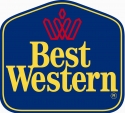
Eclipsing Golden Arches Locations Inevitable; Beating Its Sales Unlikely
By Emily Bryson York
CHICAGO (AdAge.com) -- Move over Ronald: Jared is taking over the world. In the next few months, Subway will become the world's largest fast-food chain in terms of locations. With 31,771 at press time and expecting to pass 31,800 this week, Subway is racing toward McDonald's 32,158 total restaurants. In overall sales, however, the Golden Arches are still light years ahead.
Subway Development Director Don Fertman said that the milestone reflects not only the importance of convenience, but of fresh alternatives and custom-made food. "Our customer wants quality products, not pure convenience, and [our customer also wants] customization -- more or less vegetables on the sandwich, cucumbers or no peppers --[a sandwich] made exactly the way [he or she] wants it," he said. "And there aren't a lot of folks that do that on fresh-baked bread."
Ron Paul, president of Technomic, said that outside of Asia, bread and some kind of topping "is an almost universal food." And Subway, he added, is just starting to get aggressive in its international development.
And it will have to if it wants to surpass McDonald's in every way. Dennis Lombardi, exec VP-food service at WD partners, said "you need about five or six Subways to equal one McDonald's in terms of sales." The average U.S. McDonald's had about $2.3 million in sales last year; the average Subway made about $445,000, according to Technomic.
There also remains a vast disparity in advertising budgets. According to TNS Media Intelligence, McDonald's spent $815 million in U.S. measured media in 2008 vs. Subway's $375 million over the same period. Subway's agency is MMB, Boston.
McD's strategy
McDonald's has slowed its expansion efforts in most countries during recent years to focus instead on existing-store profitability. Spokeswoman Lisa McComb said simply, "Our focus continues to be on our customers around the world." And with Subway adding about 40 stores a week, surpassing McDonald's in terms of locations, "was inevitable," Mr. Lombardi said.
Unit growth has been a key component of Subway's mantra since the early 1980s. Mr. Fertman recalls starting at Subway in 1981 when there were 166 locations. He was charged with preparations for the 200th location, which was expected in a few years. But at his first meeting with Co-founder Fred DeLuca and the initial international development team, Mr. DeLuca proclaimed that Subway would have 5,000 locations by 1994. "We thought he was nuts," Mr. Fertman said. But soon, everything from store banners to corporate letterhead proclaimed the 5,000 store goal. Subway actually had 10,000 locations by 1994.
At this point, Mr. Fertman said, Subway doesn't need to add locations to build awareness and strengthen its brand, and it's unlikely to use the milestone in any formal marketing efforts. It's not going to make consumers want to buy a sandwich, Mr. Fertman said, but it will help the company build its franchise system even further. And it's big deal at corporate headquarters, where there's free ice cream for the entire staff every time Subway opens 100 locations. "I like the raspberry sorbet," Mr. Fertman said.
Last year's key growth driver was the chain's $5 footlong promotion, now a staple of the menu. Tony Pace, CMO of the Subway Franchise Advertising Fund Trust, said that that not only was the promotion dramatically accretive to same-store sales, "we jumped in front of the pack," by taking the lead in the value category others then had to chase. Mr. Pace said that last year's promotion resulted in double-digit same-store sales gains in the U.S.
It also spawned a host of imitators, throughout the quick-service restaurant industry and even in grocery stores, which has eaten into this year's sales. But Mr. Pace said that Subway's same-store sales are still slightly up over last year, which, considering the year they had, "is phenomenal." He added that such tactics are appealing to investors. "People who are going to invest in franchises are going to go with the ones that are going to win."
Fracnhisee temptation
Subway restaurants have comparatively low start-up costs, and the all-sandwich menu is generally less intimidating to restaurant-industry neophytes. Mr. Fertman noted that Subway always racks up franchisee applications in a down economy, when laid-off workers, disenchanted with the corporate world, decide to try their hands restaurant ownership. It doesn't hurt that the franchise ranks are packed with success stories. Hardy Grewal, who has about 1,000 Subway restaurants under his control, got his start in 1989. His wife was bored, so he bought her a Subway. He quit his job in 1991 because she was earning more.
Subway has 22,740 U.S. locations. And if there's a saturation point, Mr. Fertman has said they're not there yet. The chain is currently focusing on areas of lower penetration (by Subway standards) such as Boston, the home of Dunkin' Donuts.
With regard to developing location encroachment, Subway spokesman Les Winograd said, "It's really not an issue for us. We have a lot of tools available to help us understand the possible impact a new location would have on existing stores. If there is a concern, we would bring all the appropriate people into the conversation to determine the next steps."
The chain's next major hurdle will be cracking into breakfast, which remains in test, though the company is encouraging franchisees to extend their hours of operation. The chain has an unusually hands-off approach with its franchise system, even encouraging operators to create new menu items.
"You've got to take your hat off to Subway," said UBS analyst David Palmer, who added that among their many feats, "They've also redefined value at the $5 price point and created a barrier for other fast-food players that's painful to get above."
By Emily Bryson York
Published: September 21, 2009
Source: Advertising Age








